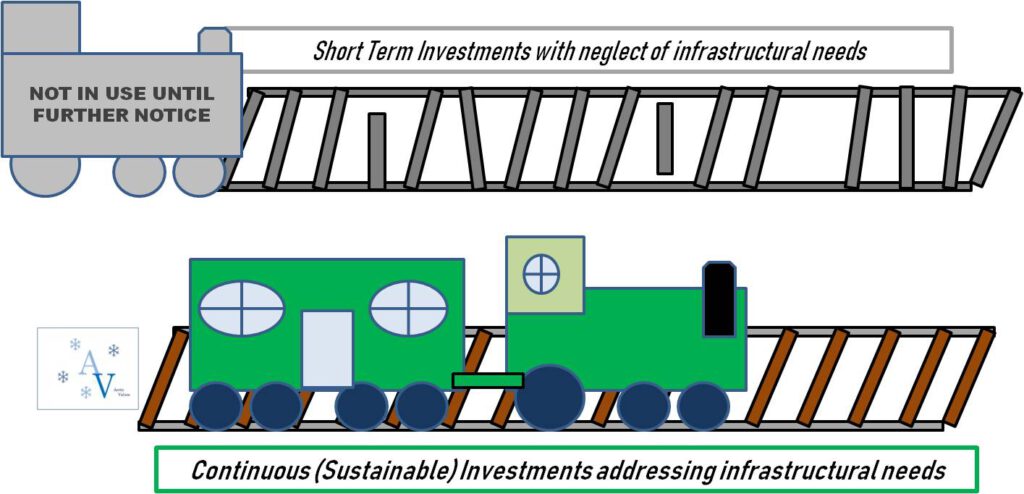February 2024
by Adrian Braun
In one way or another infrastructural development and maintenance of existing infrastructure is significant to all of us! It concerns individual residents, as well as, institutional actors, and is therefore essential for societal well-being and economic stability. Infrastructure is a wide term, but for this short essay, let us refer in particular to transport systems and energy grids across Europe. (Education facilities, health care centers, and other entities are also elements of infrastructures, though not discussed much further here, those are fundamentally important in the society, too)!

Transport is crucial in our globalized world, public as well as private actors rely on a smooth way of delivering goods and services from “A” to “B” and the possibilities for individuals to travel safely, timely, and to affordable and reasonable costs. In many countries across the EU, we can perceive that transport systems and energy grids turn old and older, without the necessary large-scale modernization happening. Lots of the original infrastructure is still in place, railroads, roads, and bridges that were constructed in the mid of the 20th century and just “repaired sporadically if needed. While these systems may be resilient for certain times and natural life spans can be sometimes stretched for years and decades, at some point, certain elements are eventually dysfunctional, possibly due to too high risks of continuing operations. A very good example is dilapidated highway bridges that cannot be used anymore and the reconstruction would take a few years. Meanwhile, the traffic may be forced to go extra long distances, and possibly instead of using the common highway, big trucks and lorries are forced to go through small villages. A very common example these days, with severe negative ecological and societal impacts. Ignored problems do not vanish, they grow larger, so why are the infrastructure maintenance challenges, often ignored?
The answer is rather simple and shows a dilemma. Infrastructure, both maintenance and development is not only costly but also time-intensive. To achieve large-scale impacts that are also perceived by the public, certain actions may easily take 10-20 years.
For governmental leaders, this causes circumstances that do not allow it to be a very attractive idea to invest in infrastructural needs. Those administrations (governments) usually serve in terms (election periods) of 4-6 years a rather short time frame. Investing Millions, sometimes Billions of Euros into infrastructure with tight budgets, but not getting a perceived result while the administration is running is problematic. During those years, it is rather likely that construction will cause disturbances for diverse actors and potential voters are rather angry than grateful for the initiative. Therefore, decision-makers with the power to distribute public funds opt rather for positive short-term impacts to keep potential voters happy. Transport systems and Energy grids often do not belong to those.
While somehow, political agendas and incentives for long-term perspective thinking are urgently needed in our current European society and political landscapes, the question arises, what else can be done to achieve the necessary long-term financing needs?
One pathway, at least worth discussing more at the round-tables is to step potentially away from budgets fed by tax-payers and learn about alternatives in terms of novel financing tools. Development into infrastructure and energy can be done in sustainable ways, arguably in the long run the better option in many cases. Therefore green financial instruments with capital utilization from global institutional investors can be a fruitful way. Green Bonds have been largely utilized in the past few years to finance projects often linked to climate-related initiatives and smart city projects. Institutional investors from large-scale banks, insurance companies, pension funds, and others are interested in diversifying capital allocations, and therefore continuously more green capital is available. As long as the projects are profitable and they just have to be in the long run, not immediately, it is worth considering green bonds and similar green finance tools to get the long-pending infrastructure modernization eventually done!
Legal Notice / Impressum – Arctic Values – Copyright © 2024